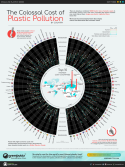China’s demographic doomsayers cite the wrong data
Like Krugman’s predictive miss on the Asian Tigers, pundits aplenty are misreading the meaning of China’s Fourth Industrial Revolution
A meme popular among American pundits claims that China’s economy is doomed by a slowly declining population. More important than the aggregate Chinese population is the technically proficient Chinese population.
That has grown 20-fold, or by 2,000%, in the past 40 years. Other Asian countries, notably South Korea, previously achieved record-shattering productivity gains with similar enhancement of skills.
We’ve heard this argument before, applied to the Asian Tigers. The doomsayers had their heyday just before East Asia’s growth went vertical. Perhaps the worst economic prediction in recorded history was Paul Krugman’s 1994 assertion that the Asian economic miracle was a myth, and that the Asian Tigers—Singapore, South Korea and Taiwan—would crumble like the Soviet Union.
Krugman, an academic, Nobel Prize winner in economics and New York Times pundit, claimed in a celebrated
that “the newly industrializing countries of Asia, like the Soviet Union of the 1950s, have achieved rapid growth in large part through an astonishing mobilization of resources. Once one accounts for the role of rapidly growing inputs in these countries’ growth, one finds little left to explain. Asian growth, like that of the Soviet Union in its high-growth era, seems to be driven by extraordinary growth in inputs like labor and capital rather than by gains in efficiency.”
The Asian Tigers, Krugman averred, were “running into diminishing returns.” But manufacturing productivity in South Korea rose more than five-fold between 1994 and 2012, an astonishing achievement.
South Korea’s industrial work force fell during its great manufacturing boom, but it caught up to and in some cases overtook Japan in key industries, including semiconductors, displays and automobiles. No Japanese company today can compete with Samsung in computer chips.
In 1990, just 35% of South Korean high school graduates went on to some form of higher (tertiary) education; by 2010, the proportion stood at a remarkable 100%. Seoul has more PhD’s than any other city in the world. The South Koreans invested impressively in plant, equipment and infrastructure, but most of all, they educated their people to world standard.
China is now attempting on a gigantic scale what South Korea did during the late 1990s and early 2000s. Krugman’s diminishing returns argument of 1994 has resurfaced in the case of China: China has already moved most of its rural population to cities, and can’t count on the surge in labor supply that powered its growth during the 2000’s.



